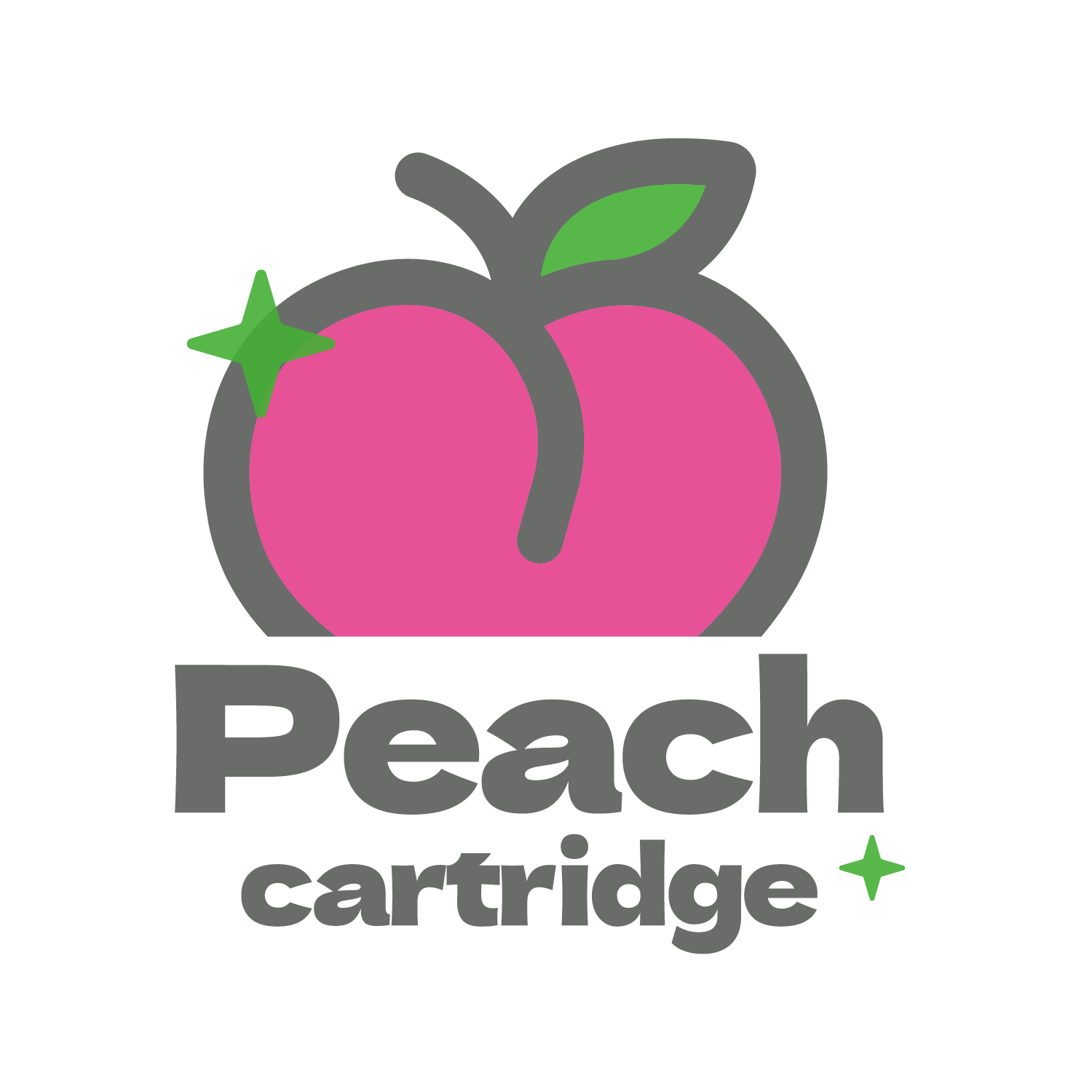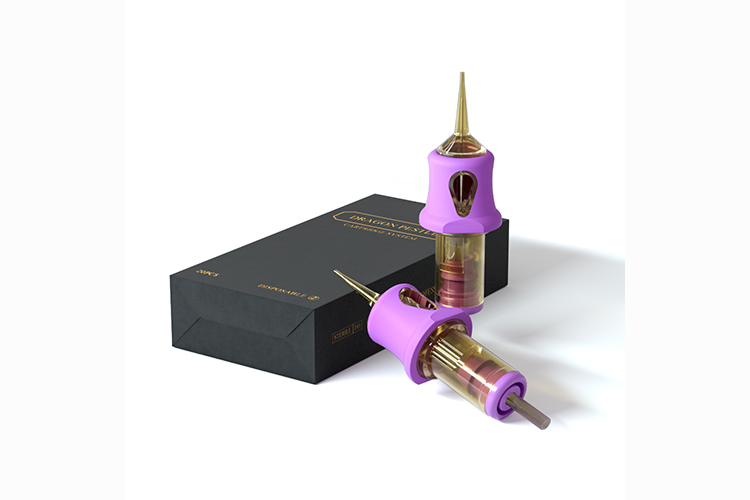Tattooing is an art that requires a lot of precision and skill. Part of this precision comes from the selection of the right tattoo needle. Tattoo cartridge needles come in a variety of sizes, which can be confusing for beginners. Understanding the different sizes and types of needles is crucial to creating high-quality tattoos.
Tattoo needles have parts like the needle, bar, and tip. The size of the needle refers to the diameter of the needle, which can range from minuscule to enormous. Tattoo artists use different needle sizes for different parts of the tattoo, such as outlining or shading.
II: Key Takeaways
- Understanding the different components of tattoo cartridge needles is important for selecting the right needle size.
- Tattoo artists use different needle sizes for different parts of a tattoo, such as outlining or shading.
- Choosing the right needle size is crucial for creating high-quality tattoos.
III:Understanding Tattoo Cartridge Needles
Tattoo cartridge needles are a popular choice among tattoo artists because of their convenience and ease of use. They come in a variety of sizes and configurations, making it easy for artists to achieve the desired effect. In this section, we will discuss the different types of tattoo cartridge needles, needle groupings, and needle sizes.
A:Needle Types
Tattoo cartridge needles come in two main types: round and flat. Artists use round needles for lining and shading, and they use flat needles for filling in large areas. The needle type determines the shape of the needle tip, which affects the way it deposits ink into the skin.
B:Needle Groupings
Tattoo needles come in different groups, indicating how many needles are in one cartridge. The most common needle groupings are 1, 3, 5, 7, 9, and 11. A larger grouping can cover a wider area in a single pass. However, larger groupings may cause more trauma to the skin and require longer healing times.
C:Needle Sizes
The diameter of the needle determines the range of sizes for tattoo cartridge needles. The most common needle sizes are #12, #10, #8, #6, and #4. The smaller needle size determines the creation of finer lines. However, smaller needles may require more passes to achieve the desired effect.
D:Needle Diameter and Gauge
The size of a tattoo needle affects how much ink enters the skin. The smaller the needle diameter, the finer and more controlled the ink flow. We measure needle diameter in gauge, where larger gauge numbers indicate smaller needle diameters.
E:Needle Cartridges
Typically, manufacturers sell tattoo cartridge needles in pre-sterilized cartridges that artists can easily load and dispose of. Cartridges vary in size and style, so artists can choose different needle types and groupings as required.
To get the tattoo you want, it’s important to know about different types, groups, and sizes of tattoo needles. Artists can easily create detailed designs by choosing the right needle type, grouping, and size.


IV: Key Components of Tattoo Cartridge Needles
Tattoo needles have parts that affect how well they work for different tattooing methods. The three main components are taper, diameter, and configuration.
A:Taper
The taper of a tattoo cartridge needle refers to the shape of the needle tip. A long taper needle has a gradual slope from the tip to the base, while a short taper needle has a more abrupt slope. The taper of a needle affects how easily it penetrates the skin and how much ink it deposits. For example, a long taper needle is better for shading and blending, while a short taper needle is better for lining and detail work.
B:Diameter
The diameter of a tattoo cartridge needle refers to the thickness of the needle shaft. Thinner needles are good for small details, while thicker needles are better for shading and filling larger areas. The most commonly used diameters for tattoo cartridge needles are #12 gauge, M1, and M2.
C:Configuration
The configuration of a tattoo cartridge needle refers to the arrangement of the needles in the cartridge. Several different configurations include round liner, round shader, magnum, curved magnum, and regular magnum. Each configuration performs a specific function and exhibits a distribution of needles.
D:Needle Selection for Tattooing: Key Components to Consider
When choosing a needle for tattooing, it’s important to consider the taper, diameter, and configuration of the cartridge needle. By understanding these key components, tattoo artists can achieve the desired results and create high-quality tattoos.
V: Specifics of Tattoo Needle Types
Tattoo needles come in various shapes and sizes, each designed for a specific purpose. Here are some of the most common types of tattoo needles:
A:Liners and Shaders
Artists use liner needles for outlining designs and use shader needles for filling in color. Round liner needles (RL) are the most commonly used liner needles and are best for fine lines and details. Artists use round shader needles (RS) for shading and blending. You can use Magnum needles (M) for larger areas and they come in different sizes.
B:Magnum Needles
Magnum needles come in two types: curved magnum (CM) and weaved magnum (WM). We use curved magnum needles for curved areas of the body, and we use weaved magnum needles for filling in larger areas with color.
C:Flat Needles
You can use flat needles (F) to shade large areas, and they come in different sizes. People also sometimes refer to them as shader needles.
D:Bugpin Needles
Bugpin needles are needles that have a smaller diameter than regular needles. People commonly use them for fine lines and details. Regular magnum (RM) or long taper (LT) needles also refer to them sometimes.
E:Choosing the Right Needle: Size, Taper, and Configuration
When choosing a needle, it is important to consider the size, taper, and configuration. Round liners (RL) are best for fine lines, while round shaders (RS) are best for shading. Artists use Magnum shaders (M) for larger areas, and they use flat shaders (F) for shading large areas. Artists use round magnums (RM) to shade and blend, and they use curved magnums (CM) for curved areas of the body.
F:Understanding Tattoo Needles: A Variety for Every Purpose
In summary, tattoo needles come in a variety of shapes and sizes, each designed for a specific purpose. When choosing a needle, it is important to consider the size, taper, and configuration. By understanding the different types of needles available, tattoo artists can create beautiful and intricate designs.

VI:Considerations When Choosing Tattoo Needles
When choosing tattoo cartridge needles, there are a few important considerations to keep in mind. Here are some factors to consider when selecting the right needle size for your tattooing needs
A:Ink Flow and Line Work
One of the most important factors to consider when choosing tattoo cartridge needles is ink flow. Your choice of needle size will affect the amount of ink deposited into the skin and the smoothness of its flow. For tight line work, a smaller needle size is ideal, while larger needle sizes are better for shading work and color packing. Choosing a needle size that will allow for consistent line work and solid lines is important.
B:Quality and Sterilization
Another important factor to consider when choosing tattoo cartridge needles is quality and sterilization. Choose high-quality, sterilized needles to avoid skin damage and infection. Some tattoo artists use disposable needles, while others use reusable needles that they sterilize after each use. It is important to select needles that are sterilized and free from contaminants.
C:Personal Preference and Tattoo Style
Lastly, personal preference and tattoo style are important factors to consider when selecting tattoo cartridge needles. Every tattoo artist has their own unique style and preferences for needle size and grip. Some artists prefer a tight grip for fine lines and lettering, while others prefer a looser grip for shading work and dot work. Try different needle sizes and grips to find the right fit for your tattooing style and needs.
D:Summarize
When choosing tattoo cartridge needles, think about ink flow, line work, quality, sterilization, personal preference, and tattoo style. Tattoo artists can choose the correct needle size and grip for good quality tattoos by considering these factors.
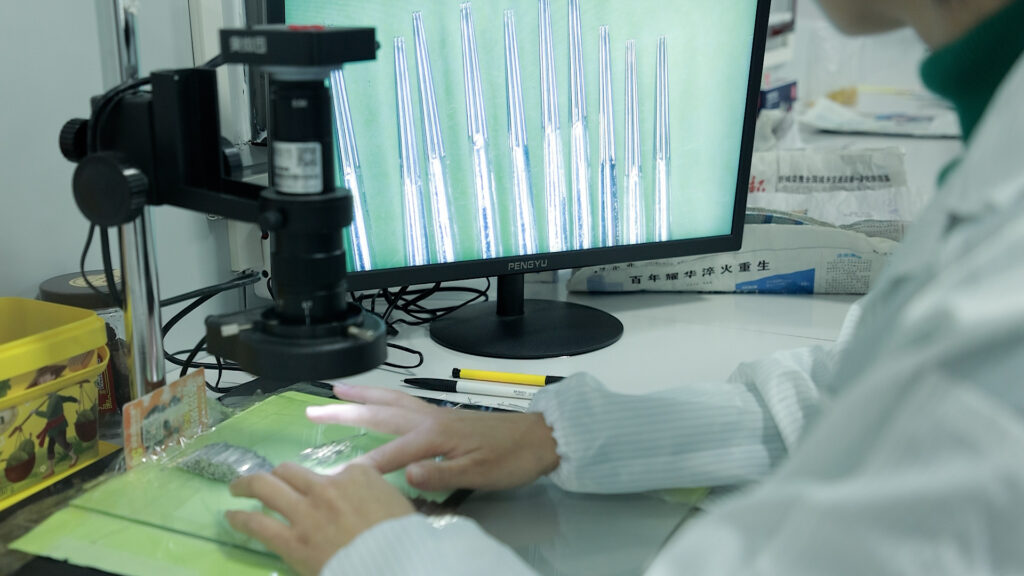

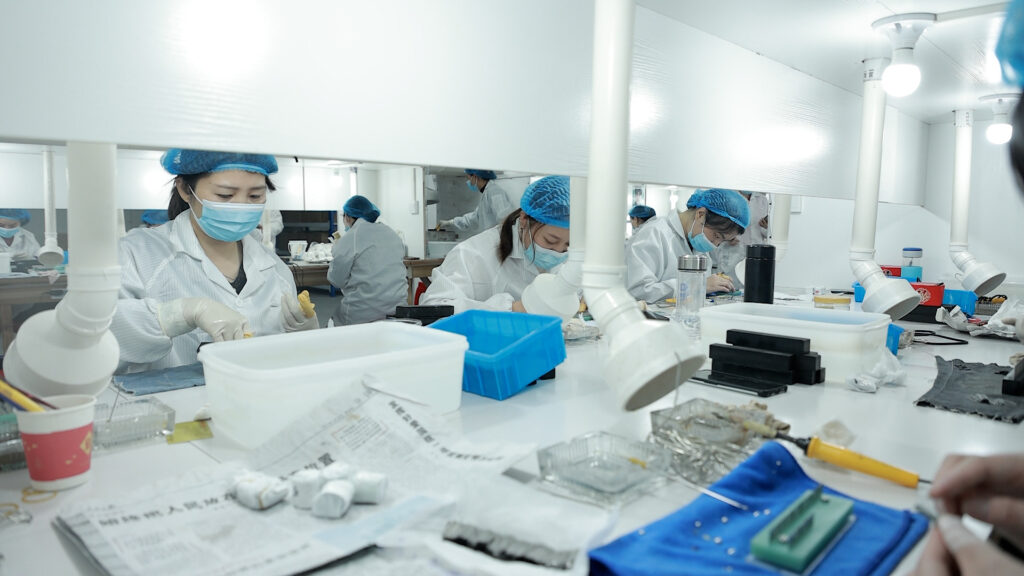
VII: Tattoo Needle Sizes on Skin
Tattoo needle sizes play a crucial role in achieving the desired results when tattooing. The size of the needle determines how thick the lines are and how much ink it deposits in the skin. Choosing the right needle size for the job is important to ensure that the tattoo looks its best and heals properly.
Tattoo artists commonly use round liner needles for outlining and detail work. They are available in various sizes ranging from #1 to #18. Artists use the smaller sizes for fine detail work and the larger sizes for bolder lines. #3 and #5 are the most commonly used sizes for outlining.
B:Round Shader Needles
Artists use round shader needles for shading and blending. They are available in sizes ranging from #3 to #15. Artists use the smaller sizes for fine shading and the larger sizes for more significant areas. #7 and #9 are the most commonly used sizes for shading.
C:Round Magnum Needles
Tattoo artists use round magnum needles, also known as curved magnum needles, to fill in large areas. They are available in sizes ranging from #5 to #15. Users use the larger sizes to fill in large areas quickly, and they use the smaller sizes for more detailed work.
D:Weaved Magnum Needles
Weaved magnum needles are like round magnum needles, but they have multiple rows of needles that are woven together. You can use them to fill in large areas quickly, and they come in sizes ranging from #5 to #15.
E:Flat Needles
You use flat needles to shade and fill in large areas. They are available in sizes ranging from 4F to 50F. Users use the larger sizes to fill in large areas quickly, and they use the smaller sizes for more detailed work.
E:Conclusion
In conclusion, understanding tattoo needle sizes is crucial for achieving the desired results when tattooing. Choose the correct needle size for the tattoo to make it look good and heal well. People use different sizes for different purposes.
VIII: Smallest Tattoo Needle Size
In tattooing, the size of the needle used is crucial in achieving the desired result. The smallest tattoo needle size is typically a single needle, also known as a liner needle. Artists use these needles for fine details and line work. They are available in various sizes, with the smallest size being 0.18mm.
A:Precision and Control with Small Needle Size
Using a smaller needle size allows for greater precision and control over the tattoo design. Ideal for intricate designs and small tattoos.
B:Extended Completion Time
The tattoo may take longer to complete. This is because the artist needs to go over the same spot multiple times. They do this to achieve the desired result.
C:Increased Pain and Discomfort
Using a smaller needle size may cause more pain and discomfort for the client. The needle penetrates the skin at a greater depth, causing more trauma to the skin. Therefore, the artist must be skilled and experienced in using these needles to minimize pain and discomfort.
D:Round Needles for Shading and Coloring
In addition to liner needles, there are also round needles that come in small sizes. You use these needles for shading and filling in color. The smallest round needle size is typically a 3-round needle, which is equivalent to three single needles grouped together.
E:Choosing the Right Needle Size
Overall, the smallest tattoo needle size is a single needle, which is ideal for fine details and line work. However, it may cause more pain and discomfort for the client and may take longer to complete the tattoo. Choosing the right needle size based on the desired effect and the client’s comfort level is important.
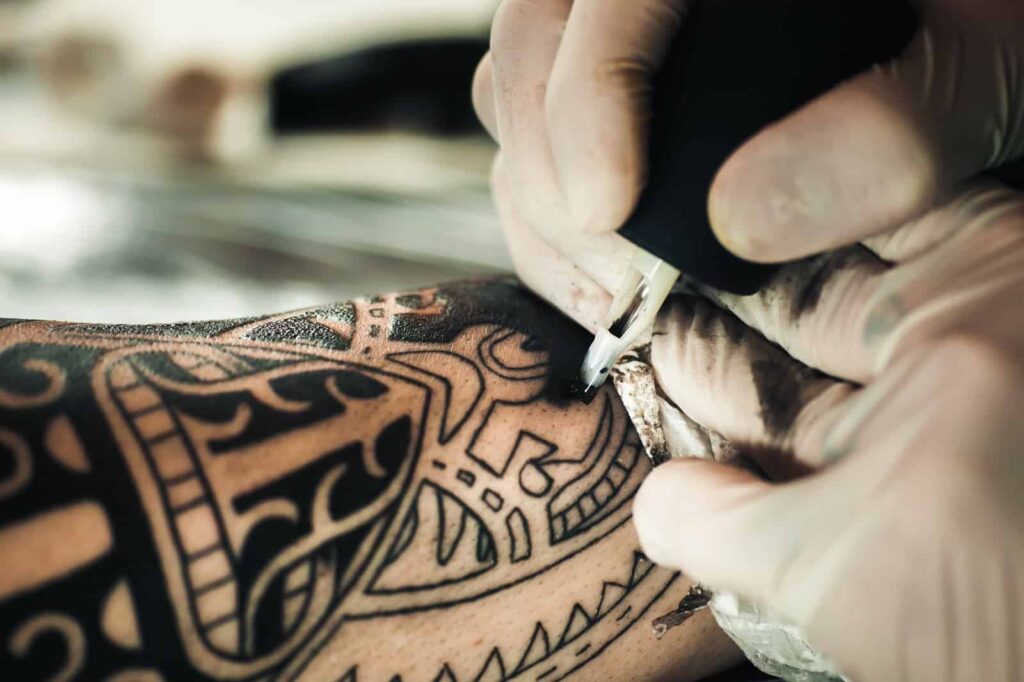

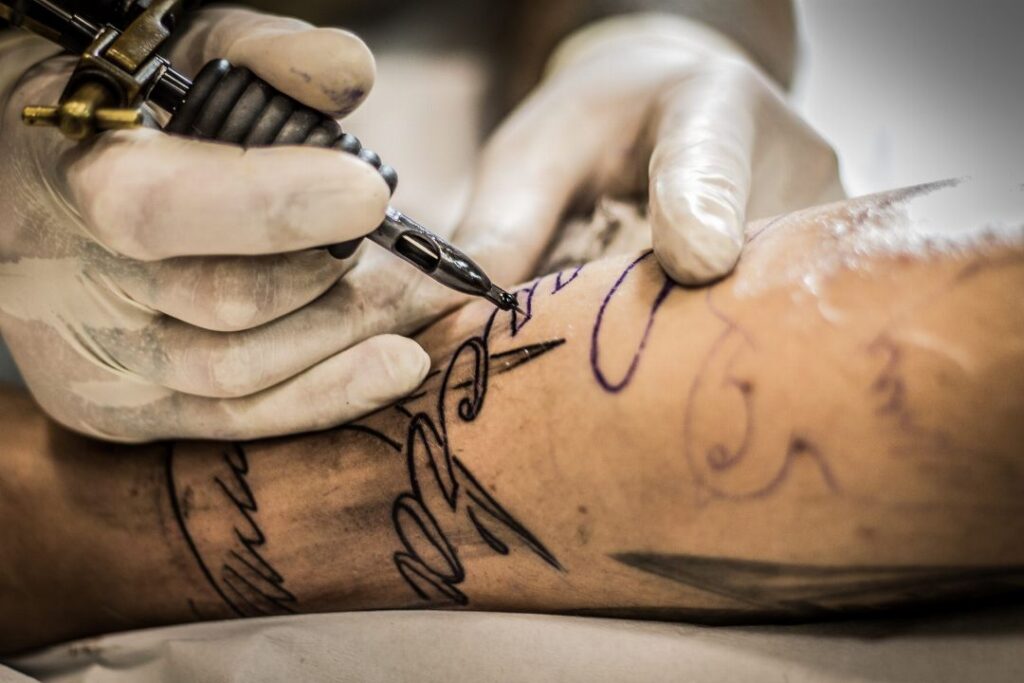
IX: Tattoo Needle Sizes Explained
Tattoo needle sizes are an essential aspect of the tattooing process. They come in different sizes and diameters, and each size has its specific function. Tattoo artists must know needle sizes to make good designs that satisfy clients.
A:Introduction to Tattoo Needle Sizes
The most commonly used tattoo needle sizes are #08 gauge (0.25mm), #10 gauge (0.30mm), and #12 gauge (0.35mm). The #08 gauge needle, also called a bugpin needle, is a common choice for intricate detailing. It has a slower flow of ink, which makes it suitable for fine lines and small details.
B:Details of #08 Gauge (0.25mm) Needle
The #10 gauge needle is slightly smaller than the #12 gauge needle and causes less trauma to the skin. It allows for more ink than the #08 gauge needle and is ideal for shading and coloring.
C:#10 Gauge (0.30mm) Needle for Shading and Coloring
The #12 gauge needle surpasses the #10 gauge needle in size and is a common choice for lining and traditional work. It has a faster ink flow and is great for bold lines and color packing.
DBold Lines and Color Packing with #12 Gauge (0.35mm) Needle
Besides the usual needle sizes, there are other sizes with specific functions. The #06 gauge (0.20mm) needle, the smallest needle size available, is used for fine details and intricate work. The #14 and #16 gauge needles surpass the #12 gauge needle in size and artists frequently use them for coloring and shading.
E:Specialized Needle Sizes for Fine Details
Tattoo needles come in various types, like liner, shader, magnum, curved magnum, and regular magnum. Each configuration possesses a specific function and exhibits a distribution of needles that characterizes it.
F:Diverse Types of Tattoo Needles
A round liner needle has tightly packed needles in a single row. People often use it for outlining and creating fine details. A magnum needle setup has multiple rows of needles in a circular pattern. People often use it for shading and coloring expansive areas.
G:Importance of Knowing Needle Sizes for Tattoo Artists
To make good tattoos, artists must know needle sizes and types to meet clients’ needs and create great designs. Tattoo artists can make sure their designs are accurate, strong, and durable by choosing the right needle size and shape.
X: Needle size tattoo line thickness
The thickness of the line in a tattoo will depend on the needle size used by the artist. Generally, smaller needles will create thinner lines, while larger needles will create thicker lines. The needle size, artist’s pressure, and ink’s consistency decide the line’s thickness.
A:Round Liner Needles and Thin Lines
Tattoo artists use round liner needles for lining. They come in sizes 1 to 18. Sizes 1 and 3 are good for making thin lines. On the other hand, larger sizes like 14 and 18 are more appropriate for thick lines and bold designs.
B:Round Shader Needles for Shading Effects
Round shader needles resemble round liner needles, but they have a design that creates shading effects instead of lines. They are available in sizes ranging from 3 to 18, with smaller sizes being ideal for subtle shading and larger sizes for more dramatic effects.
C:Flat Needles for Wider Lines and Filling
Flat needles are used for creating wider lines and filling in large areas. They are available in sizes ranging from 4 to 14, with larger sizes being better suited for filling in large areas and smaller sizes for creating finer details.
D:Magnum Needles for Shading and Filling
Magnum needles are available in various configurations, including round magnum, weaved magnum, and flat magnum. They are used for shading and filling in large areas and are available in sizes ranging from 5 to 49 needles. The larger the number of needles in the configuration, the wider the line created.
F:Variety in Line Thickness and Shading Techniques
It is important to note that the thickness of the line created by a needle is not always consistent throughout the entire tattoo. The artist may use different needle sizes and techniques to create a range of line thicknesses and shading effects to achieve the desired result.
Frequently Asked Questions
Many people commonly use this size for bold outlines and tattoos that need heavy, solid lines.
#12 needles are thicker and create bold lines, while #10 needles are slightly thinner than #12 and are suitable for general lining work. The choice between #12 and #10 tattoo cartridge needles depends on the type of tattoo work the artist is doing.
The size of the needle to use when tattooing depends on the type of tattoo work the artist is doing. Tattoo artists use thick needles for bold lines and shading, and thin needles for fine details and outlining. Choosing the right needle size is important to achieve the desired effect.
Artists use 3RL tattoo needles to create fine lines and details. People commonly use them for outlining and adding intricate details to a tattoo design.
The best tattoo needles for lining are #10 and #12 tattoo cartridge needles. People commonly use these sizes for general lining work, creating bold outlines, and tattoos that require heavy, solid lines.
I recommend beginners start with a #12 tattoo cartridge needle. Many people commonly use this size for bold outlines and tattoos that need heavy, solid lines. As the artist gets better, they can try different needle sizes and styles to create different effects in their designs.
